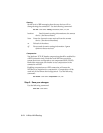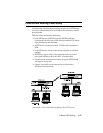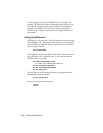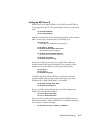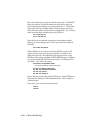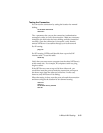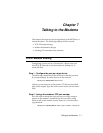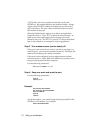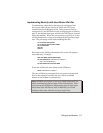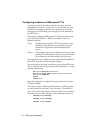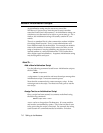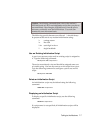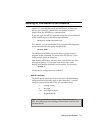7-2 Talking to the Modems
<TCP port#> can be any number not already used by the
NETServer. We suggest 6000 plus the modem number. Assign-
ing the same TCP port number to multiple ports will create a
pool of modems. The user will be connected to the first avail-
able modem in the pool.
Selecting NetData as the login service allows an application
program to form a “Clear TCP” connection with a modem. In
other words, data exchanged with the modem will not be
filtered in any way. The NETTTY pseudo TTY driver described
later in this chapter is an example of such an application.
Step 3 - Turn modem control (carrier detect) off
If the port is set to host device only (is not also a user login or a
network port) , you must turn modem control off. This keeps the
modem from refusing your telnet connection.
If the port is also configured for any other function, modem
control must be on, which allows the NETServer to detect when
the port is being used for other purposes.
Use the following command:
set s<port #> modem <
on
|
off
>
Step 4 - Save your work and reset the port
Use the following commands:
save all
reset s<port #>
Example
set s7 device /dev/network
set s7 service_device telnet 6007
set s7 modem off
save all
reset s7
To use the modem, you would simply telnet to port 6007 at the
NETServer’s IP address. For example:
telnet 192.77.203.2 6007



